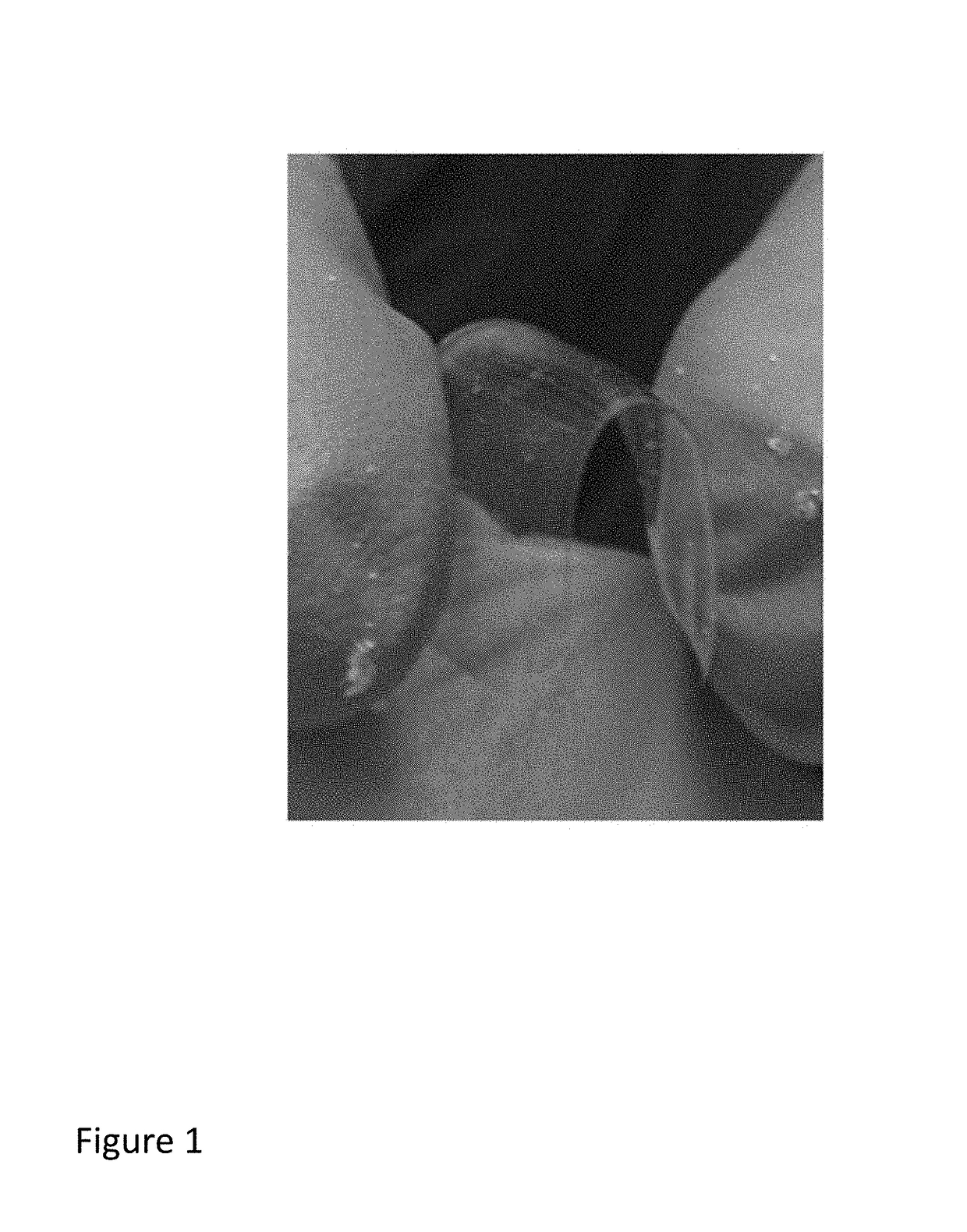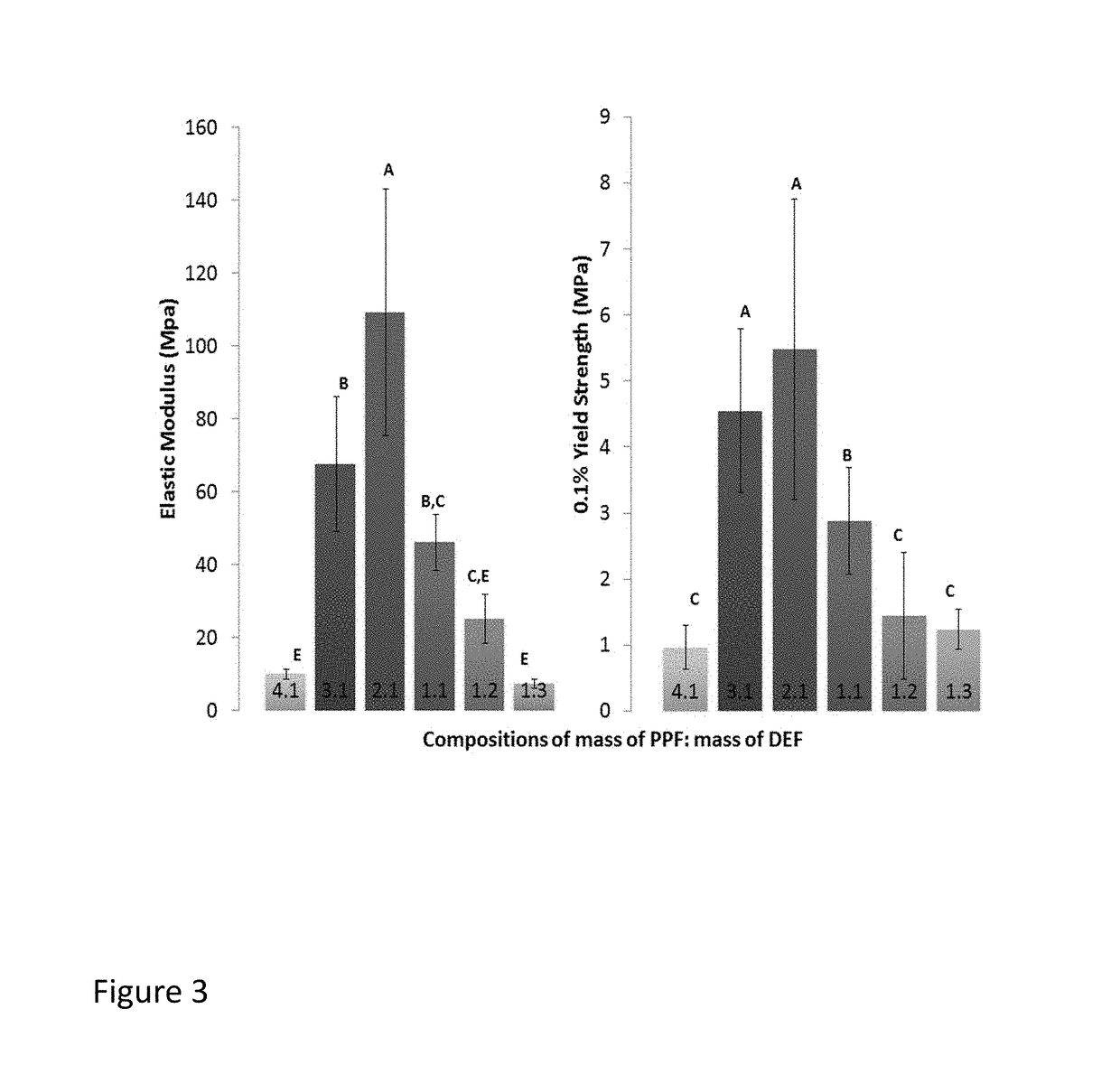Polymer-tissue hybrid biomaterials and methods of making and using same
a technology of hybrid biomaterials and tissue, applied in the field of polymer-tissue hybrid biomaterials and methods of making and using same, can solve the problems of destroying interstitial cells, deteriorating subsequent matrix, and compromising mechanical properties
- Summary
- Abstract
- Description
- Claims
- Application Information
AI Technical Summary
Benefits of technology
Problems solved by technology
Method used
Image
Examples
example 2
[0125]The following in an example of the preparation and characterization of a hybrid biomaterial of the present disclosure.
[0126]Biodegradable synthetic materials often serve as the basis for tissue engineering strategies. The biomaterials developed release bioactive molecules while maintaining strength in order to fully utilize the possible capabilities of a synthetic implantable. Directional delivery is important in delivering bioactive materials to a polar environment, such as endothelial tissue, epithelial tissue, or the walls of hollow organs. Using poly(propylene fumarate) (PPF) as a scaffold to encapsulate poly(lactic-co-glycolic acid) (PLGA) microspheres, we achieved tunable and directional release. PPF exhibits properties that support durability in physiological environments. Crosslinked PPF degrades through hydrolysis at a slower rate than PLGA, although both degrade into physiologically occurring compounds. By coating one side of the PPF / PLGA matrix with relatively slow ...
PUM
| Property | Measurement | Unit |
|---|---|---|
| weight percent | aaaaa | aaaaa |
| area | aaaaa | aaaaa |
| thickness | aaaaa | aaaaa |
Abstract
Description
Claims
Application Information
 Login to View More
Login to View More - R&D
- Intellectual Property
- Life Sciences
- Materials
- Tech Scout
- Unparalleled Data Quality
- Higher Quality Content
- 60% Fewer Hallucinations
Browse by: Latest US Patents, China's latest patents, Technical Efficacy Thesaurus, Application Domain, Technology Topic, Popular Technical Reports.
© 2025 PatSnap. All rights reserved.Legal|Privacy policy|Modern Slavery Act Transparency Statement|Sitemap|About US| Contact US: help@patsnap.com



